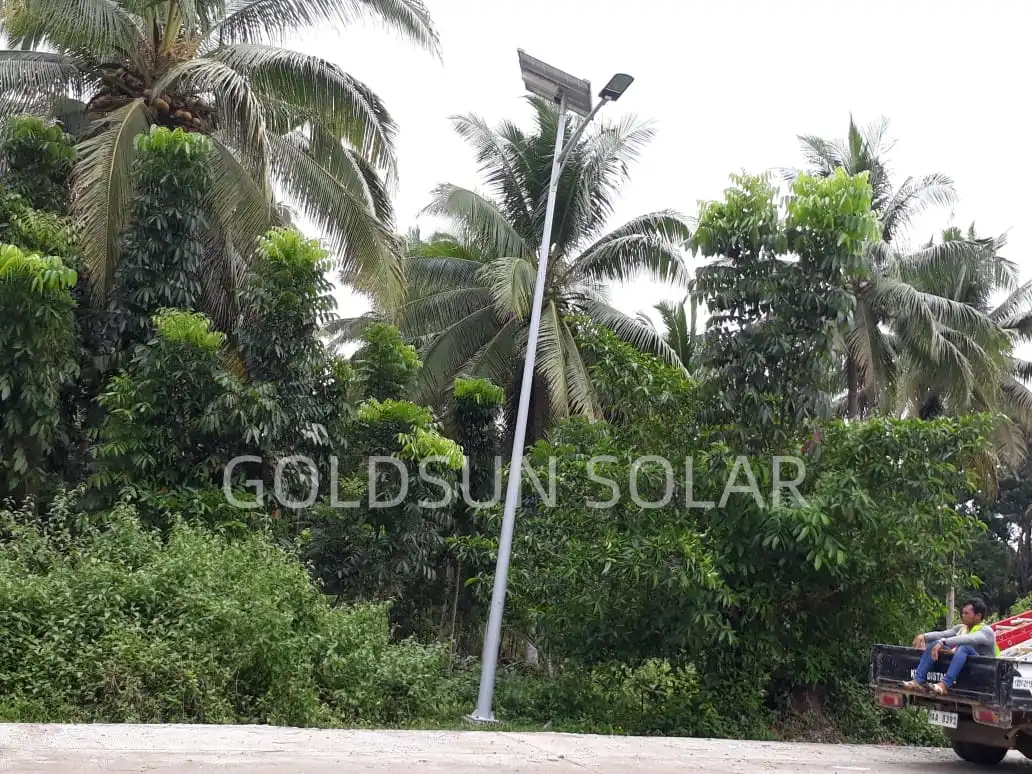Optimal solar lighting layouts for parks and plazas
Maximizing coverage and aesthetics
When designing solar street light layouts for parks and plazas, it's crucial to strike a balance between functionality and visual appeal. The goal is to provide adequate illumination while enhancing the overall ambiance of the space. To achieve this, consider the following strategies:
- Analyze pedestrian traffic patterns to identify high-use areas that require brighter lighting
- Incorporate a mix of taller pole-mounted solar lights for broad coverage and shorter bollard-style lights for pathways
- Use light temperature strategically – warmer tones for relaxation areas and cooler tones for active zones
- Integrate solar-powered accent lighting to highlight landscaping features or architectural elements
By carefully planning your layout, you can create a welcoming atmosphere that encourages community engagement and enhances safety after dark.
Addressing seasonal variations
One of the challenges in designing solar lighting systems is accounting for seasonal changes in daylight hours and weather conditions. To ensure year-round reliability:
- Choose solar panels with high efficiency ratings to maximize energy capture during shorter winter days
- Implement battery storage systems that can provide multiple nights of backup power during cloudy periods
- Consider adjustable solar panels that can be tilted to optimize sun exposure throughout the year
- Use adaptive control systems that adjust light output based on available battery charge and programmed schedules
By addressing these factors, you can create a robust solar lighting system that performs consistently across all seasons.
How to calculate required lumens for public areas?
Understanding lumen requirements
Calculating the correct lumen output for public areas is essential to ensure adequate visibility and safety. The total quantity of visible solar street lights output by a source is measured in lumens, and the amount needed can change based on the space and its intended usage. The following is a standard guideline for lumen needs in different public contexts:
- Walkways and bike routes: 30 to 50 lumens per square meter
- Parks and plazas should have between 50 and 100 lumens per square meter.
- For parking lots, 70–100 lumens per square meter
- For sports courts, 100–200 lumens per square meter
Keep in mind that these are merely recommendations; local regulations or special project requirements may call for different lumen levels.
Factors influencing lumen calculations
Take into account the following elements when figuring out how many lumens your public area needs:
- Area size: Calculate how many square feet the area that needs lighting is.
- Height of mounting: In order to maintain ground-level illumination, higher installation positions usually need for greater lumen outputs.
- Reflectivity of the surface: More light is reflected by light-colored surfaces, which could lower the necessary lumen output.
- Ambient light: Take into consideration any nearby light sources.
- Uniformity: To prevent dark areas, try to keep the lighting levels in the room constant.
You may more precisely calculate the lumen needs for your particular public space by accounting for these elements, guaranteeing both energy efficiency and the best possible visibility.
Smart solar lighting systems for community spaces
Advanced control features
Smart solar street light systems offer a range of advanced control features that can significantly enhance the efficiency and functionality of public space illumination. These features include:
- Motion sensors: Activate or increase light output when pedestrians or vehicles are detected, conserving energy when areas are unoccupied
- Dimming capabilities: Adjust light levels based on time of day or ambient light conditions
- Remote monitoring: Allow operators to check system status, energy production, and consumption in real-time
- Adaptive scheduling: Automatically adjust lighting patterns based on sunrise and sunset times throughout the year
These smart features not only improve energy efficiency but also contribute to a more dynamic and responsive lighting environment for community spaces.
Integration with smart city initiatives
Smart solar lighting systems can serve as a foundation for broader smart city initiatives, offering opportunities for integration with other urban technologies. Consider the following possibilities:
- Environmental monitoring: Equip solar light poles with sensors to collect data on air quality, noise levels, or weather conditions
- Public Wi-Fi: Use solar-powered light poles as access points for free community Wi-Fi
- Emergency response: Integrate emergency call buttons or flashing lights for improved public safety
- Electric vehicle charging: Combine solar lighting with EV charging stations to promote sustainable transportation
By leveraging these integration opportunities, municipalities can create more connected, efficient, and sustainable urban environments.
In conclusion, solar street light solutions offer a versatile and sustainable approach to illuminating public spaces. By carefully considering optimal layouts, accurately calculating lumen requirements, and leveraging smart technologies, you can create inviting and efficient outdoor environments that benefit your community for years to come. Whether you're planning a new installation or upgrading existing lighting infrastructure, solar-powered systems provide a forward-thinking solution that aligns with both environmental goals and community needs.
For more information on customized solar lighting solutions, including our 5-year warranty and OEM support, please contact us at solar@gdsolarlight.com. Our team is ready to assist you in brightening your public spaces with innovative and reliable solar technology.



